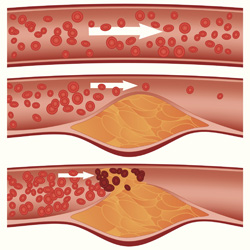Inducing angiogenesis in the heart after ischemia
Angiogenic factors have long been tested for the treatment of myocardial ischemia, proposing increased blood flow and function in the heart. However, many therapeutic candidates failed during the clinical development mainly due to high metabolic clearance (e.g. FGF) or the observation of side-effects (e.g. VEGF). As an alternative, the EU-funded project ‘Placental growth factor (PlGF): new diagnostic and therapeutic applications in cardiovascular disease’ (VASOPLUS) proposed to use PIGF for cardiac disorders and arterial insufficiency. The interesting thing about PIGF is its angiogenic capacity in pathological tissue without, however, affecting the vasculature of normal tissue. The ultimate goal of the VASOPLUS project was to evaluate the potential of PIGF as a biomarker of CVD and ultimately develop a stable PIGF formulation as a therapeutic regime. As a first step, project partners tested production of variants of recombinant human PIGF from Escherichia coli cells. A stable mutated form was selected as lead candidate and tested in pre-clinical models of myocardial and peripheral limb ischemia. In rabbits, local treatment with PlGF improved vascular growth in ischemic hind limbs, while systemic delivery in pigs increased blood flow and contractile function of chronic ischemic myocardium without adverse effects ion. Furthermore, a close relationship between PIGF blood levels and the incidence of cardiovascular disorders was demonstrated, indicating that PIGF should be considered as a biomarker for common cardiovascular disorders. Project findings are encouraging for the use of PIGF to improve the vasculature after ischemia. Further development is required for VASOPLUS PIGF to meet the criteria as a biopharmaceutical drug. However, the minimum side-effects observed during its biological testing make PIGF an attractive therapeutic candidate for CVD.







